Peter Higgs, physicist who shared the Nobel Prize for his work on the ‘God Particle’ – obituary
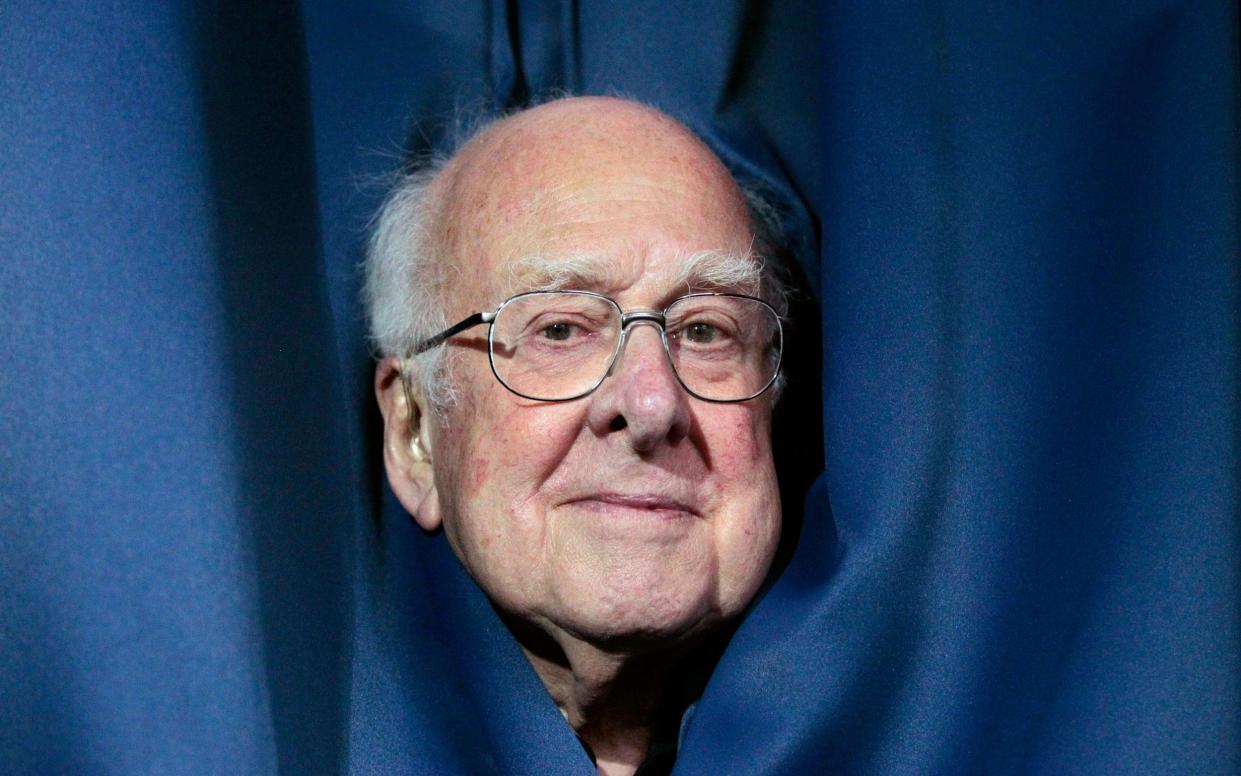
Professor Peter Higgs, who has died aged 94, correctly predicted the existence of the Higgs boson, a subatomic particle that gives other particles their mass and was regarded as the Holy Grail of theoretical physics; in 2004 he won the Wolf Prize, the second most important prize in physics, and in 2013 shared with François Englert the Nobel Prize in Physics after his long-elusive boson had finally been shown to exist by scientists at the Cern laboratory in Switzerland.
The search for the Higgs boson had obsessed particle physicists ever since Higgs, with others, postulated the idea in 1964. Explaining exactly what it was, in layman’s terms, became something of a pastime among scientists. In 1993 the then Conservative Science Minister, William Waldegrave, offered a bottle of vintage champagne to anyone who could explain the Higgs boson on a side of A4 paper.
With a great deal of creative flair, the competition entrants, including some of Professor Higgs’s colleagues, turned to analogy, poetry, rhyming verse and limericks, though laymen were left none the wiser.
Scientific fascination with the Higgs particle could be explained by the fact that if it did not exist, the entire framework of the so-called Standard Model of Particles and Fields, the theory that has been used to explain fundamental physics since the 1970s, fell down.
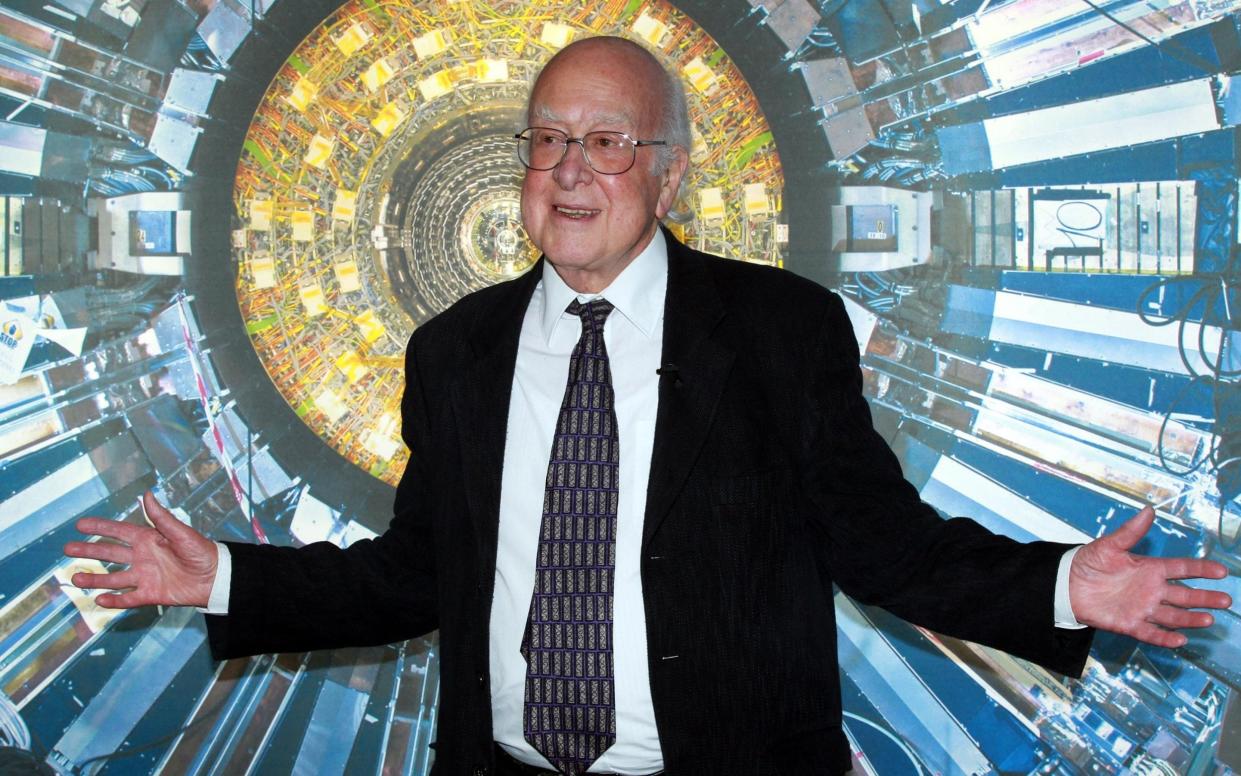
The Standard Model contains many other particles – such as quarks and W bosons – each of which has been found in the last four decades using vast particle colliders, but the Higgs had remained elusive. The Higgs boson is critical to the Standard Model, because interacting with the Higgs field is what gives all the other particles their mass, and not finding it would have profoundly undermined our understanding of the universe.
There are four fundamental forces in nature: gravity, electromagnetism, and the strong and weak nuclear forces. Gravity and electromagnetism are both long range forces, whereas the strong and weak forces only operate inside the nucleus. The Standard Model includes all these forces except gravity. However, before Higgs’s theoretical discovery, it could not explain why some particles have mass and others do not.
In 1964, the Belgian physicists Englert and Robert Brout proposed that the weak and electromagnetic interactions could be united by “spontaneous symmetry breaking”, a phenomenon well-known in condensed matter physics where it had been used to explain how, for instance, magnetic material can suddenly align itself in a particular direction.
Higgs independently came to the same conclusion as Brout and Englert and suggested that the particles that carry the weak force acquire their mass through interactions with an all-pervasive field that is now known as the Higgs field, and occur via subatomic particles, the famous Higgs bosons. As other particles move through the Higgs field, they experience a drag expressed as mass.
The Higgs boson is the 18th and arguably the most important in the Standard Model’s bestiary of subatomic particles, which includes such curiosities as the quarks, leptons and bosons. All the others had been detected in atom-smashing machines known as particle accelerators, the last having been the quark, which was detected by scientists in 1995.
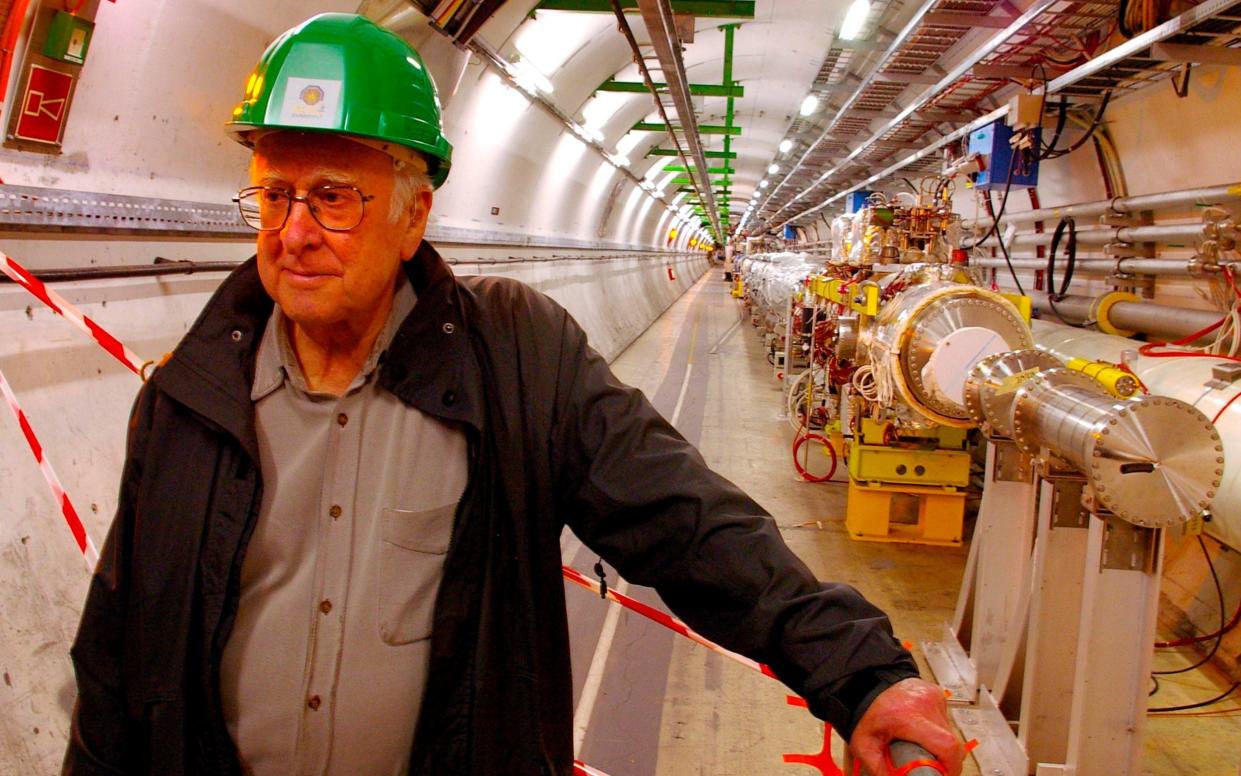
The Standard Model contains many other particles – such as quarks and W bosons – each of which has been found in the last four decades using vast particle colliders, but the Higgs had remained elusive. The Higgs boson is critical to the Standard Model, because interacting with the Higgs field is what gives all the other particles their mass, and not finding it would have profoundly undermined our understanding of the universe.
There are four fundamental forces in nature: gravity, electromagnetism, and the strong and weak nuclear forces. Gravity and electromagnetism are both long range forces, whereas the strong and weak forces only operate inside the nucleus. The Standard Model includes all these forces except gravity. However, before Higgs’s theoretical discovery, it could not explain why some particles have mass and others do not.
In 1964, the Belgian physicists Englert and Robert Brout proposed that the weak and electromagnetic interactions could be united by “spontaneous symmetry breaking”, a phenomenon well-known in condensed matter physics where it had been used to explain how, for instance, magnetic material can suddenly align itself in a particular direction.
Higgs independently came to the same conclusion as Brout and Englert and suggested that the particles that carry the weak force acquire their mass through interactions with an all-pervasive field that is now known as the Higgs field, and occur via subatomic particles, the famous Higgs bosons. As other particles move through the Higgs field, they experience a drag expressed as mass.
The Higgs boson is the 18th and arguably the most important in the Standard Model’s bestiary of subatomic particles, which includes such curiosities as the quarks, leptons and bosons. All the others had been detected in atom-smashing machines known as particle accelerators, the last having been the quark, which was detected by scientists in 1995.
Even the idea of the Higgs boson was so important that it was called the “God Particle” by the Nobel Prize-winner Leon Lederman, who had wanted to call it the “Goddamn particle” on account of its elusiveness, but his publishers would not agree. Higgs regularly pleaded with colleagues to stop referring to it as such. “First of all, I’m an atheist,” he told the Daily Telegraph. “The second thing is I know that name was a kind of joke and not a very good one. I think he shouldn’t have done that as it’s so misleading.”
Despite the expenditure of billions of pounds and the application of some of the most brilliant minds in the world, the Higgs boson went undetected for many decades. There were some scientists who believed that it did not exist and others that, even if it did exist, it would never be found. Professor Stephen Hawking, in a spirit of mischief, bet $100 with another academic that it did not exist. Higgs’s supporters believed that the best hope lay in the Large Hadron Collider (LHC), a 27km circular underground particle accelerator costing £3 billion that came online at the Cern laboratory in Geneva in 2007.
Higgs himself was cautiously optimistic, though even he doubted that the boson would be found in his lifetime. “I shall open a bottle of something,” he said when asked what he might do if it was found. “It will be champagne – whisky takes a little more time to drink.”
That bottle could finally be opened on July 4 2012 when researchers from two experiments at the Large Hadron Collider in the Cern Laboratory announced their discovery and confirmed the prediction that Higgs made all those years ago. Rather than champagne, Higgs celebrated the discovery with a can of London Pride, saying in his typically modest manner: “It’s very nice to be right sometimes.” He did, however, admit that he had “no idea” what the discovery would mean in practical terms.
Peter Ware Higgs was born on May 29 1929 at Newcastle-upon-Tyne, the son of Thomas Higgs, a BBC engineer, and his Scottish wife Gertrude, née Coghill. His father’s work took the family around the country and he was educated at Cotham Grammar School in Bristol. At 17 he moved to City of London School where he developed a passion for mathematics.
He studied physics at King’s College, London, and was quickly marked out as a member of the awkward squad. On one occasion he gave a talk entitled “How can scientists be sure the observations they make are real?” which, according to contemporary accounts, “aroused considerable controversy”. He took a doctorate in 1954 on the vibration spectra of molecules and then spent six years moving between the University of Edinburgh, University College London and Imperial College before landing a permanent position as a lecturer in Mathematical Physics at Edinburgh in 1960.
In 1961 Higgs read a paper by the Japanese-American physicist Yoichiro Nambu that based a theory of elementary particles on an analogy with the theory of superconductivity, introducing the concept of “spontaneously broken symmetry”. This inspired him to begin the theoretical work that led in the summer of 1964 to the publication of his first paper suggesting what became known as the Higgs boson. According to one popular version of the story, he came up with the concept during a walk in the Cairngorms.
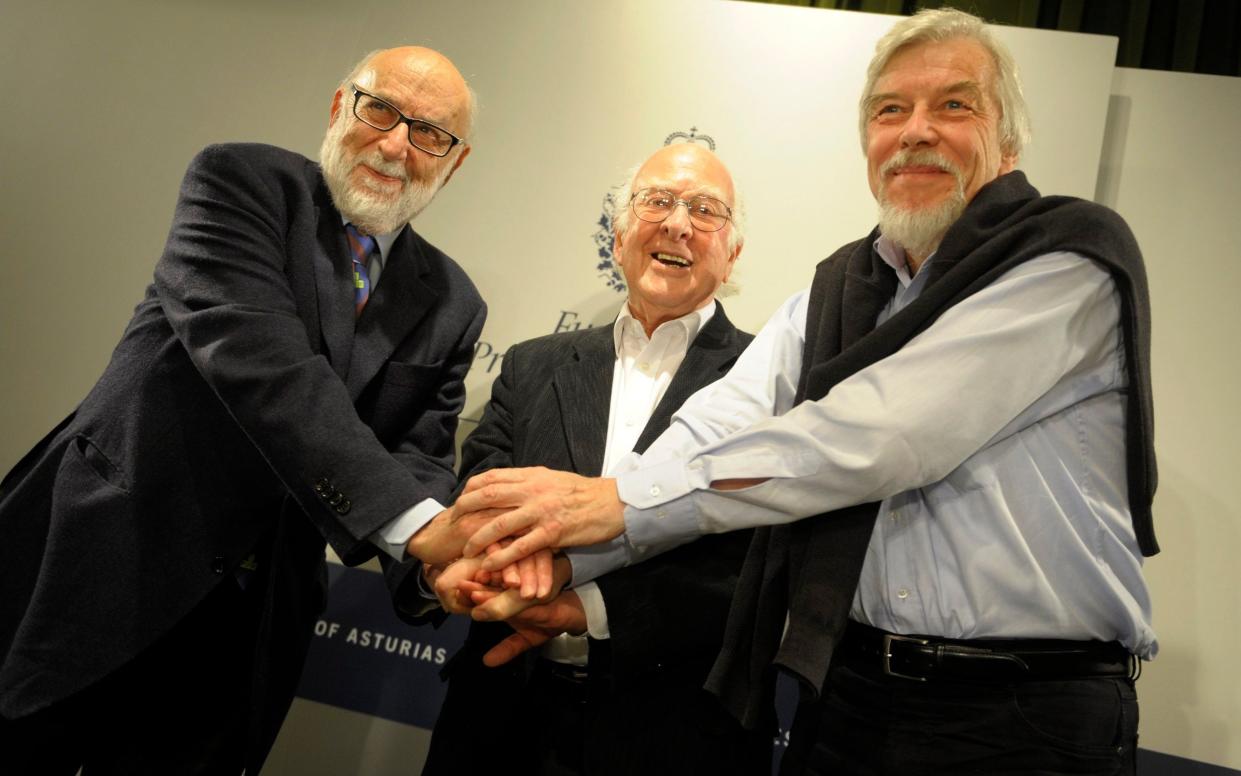
Entitled “Broken Symmetries, Massless Particles and Gauge Fields”, the paper, published in the journal Physics Letters, ran to only 79 lines of text and just five equations, and was merely concerned to demonstrate that there was no theoretical obstacle to this sort of theory. A second, equally short paper, was rejected by Physics Letters, apparently because the editors felt that “it was of no obvious relevance to physics”. Higgs sent it to a rival publication in America.
Dispirited by the reception of his theory, Higgs wrote a note to one of his post-graduate students, saying: “This summer I have found something that is totally useless.” It took many years before physicists realised the significance of his ideas. He recalled that when he gave talks at Harvard and Princeton: “I was facing audiences who thought I was a crackpot.” It was not until some of the mathematical problems associated with his theory were cleared up seven years later that it gained international credibility.
A mild-mannered man, Higgs was so modest about his achievements that he refused to talk about the “Higgs boson”, preferring to give it the more impersonal tag, the “scalar boson”. He remained active in particle theory into the 1970s, but felt that he had “got rather left behind” by later developments in the field. Eventually, he decided that he was “getting on a bit for a theorist” and decided to concentrate on teaching and “one or two minor things” involving other types of symmetry in quantum mechanics. He was appointed Professor of Theoretical Physics at Edinburgh in 1980.
Given his natural reticence, colleagues and friends were surprised when Higgs hit the headlines in September 2002 over an article headlined “Clash of the atom-smashing academics”, which appeared in the Scotsman newspaper concerning remarks that Higgs had made about Hawking to a journalist over dinner.
Higgs was reported to have said, among other things, that Hawking’s celebrity status had given him undeserved instant credibility, and that communication between Hawking and theorists in other fields was difficult. Higgs quickly wrote to Hawking explaining the context in which he made the remarks and Hawking wrote back saying that he was not offended, but adding that he still thought (or hoped) that the Higgs boson would never be found.
The Nobel Prize and its ensuing publicity proved awkward for the press-shy Higgs. On the day the award was announced he planned to drive into the Scottish Highlands so that the prize committee and the inevitable hoard of journalists would not be able to find him. But his son pointed out that he had not driven for several months and the battery on his car would likely be flat. Instead, he slipped out of his Edinburgh home early, leaving behind the mobile phone he never used, and camped out at a pub in Leith. Later he bumped into a neighbour who congratulated him on the award. “What award?” came his mischievous reply.
He later claimed that his life had been ruined by the discovery of the Higgs boson and the way in which he was thrust into the limelight. “My relatively peaceful existence was ending. My style is to work in isolation and occasionally have a bright idea,” he told Frank Close in his biography Elusive: How Peter Higgs Solved the Mystery of Mass (2022).
Higgs was elected a Fellow of the Royal Society in 1983 and a Fellow of the Royal Society of Edinburgh in 1974. Other prizes awarded in recognition of his work included the Paul Dirac Medal (1997), the Hughes Medal of the Royal Society (1981) the Rutherford Medal (1984), the Royal Medal of the Royal Society of Edinburgh (2000) and the High Energy Particle Physics Prize of the European Physical Society (1997). He was appointed a Companion of Honour in 2013.
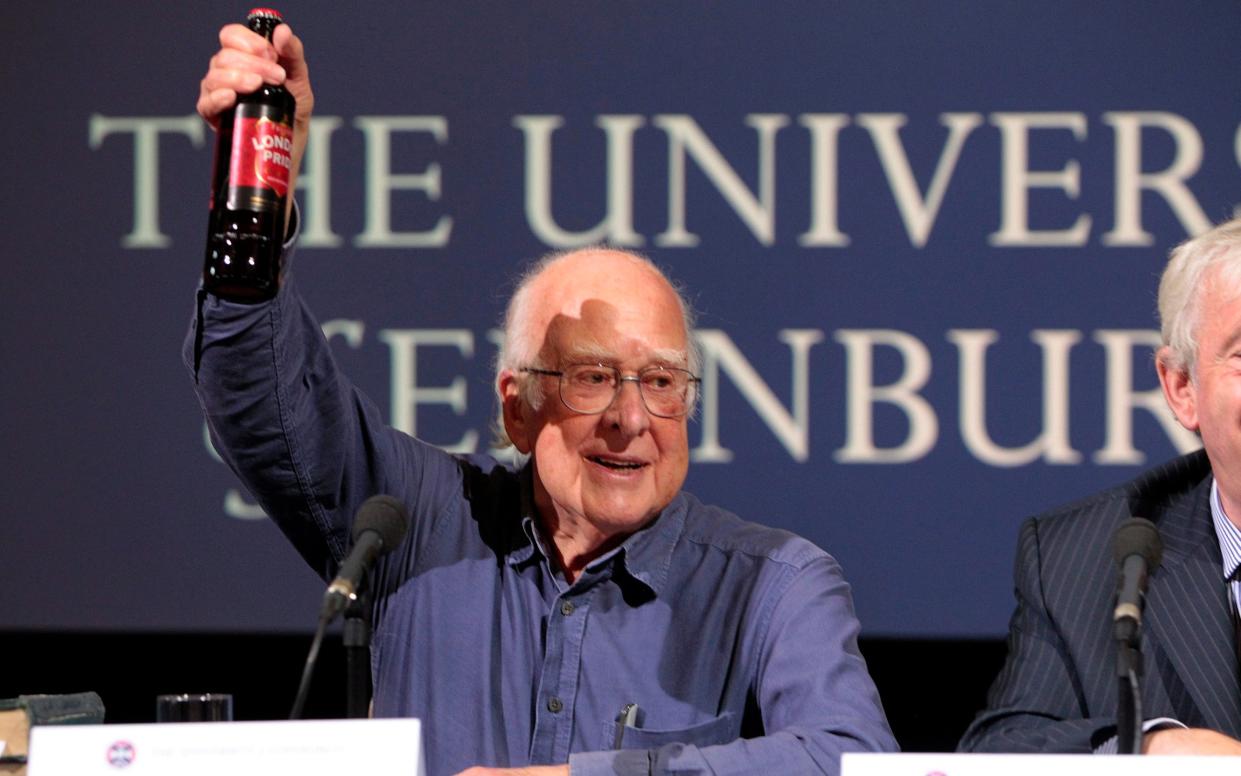
Higgs never minded upsetting people over matters of principle, however. He refused to fly to Jerusalem to receive the Wolf Prize in 2004 because it was a state occasion attended by the President Moshe Katsav of Israel, and Higgs was opposed to the country’s policies towards the Palestinians. He did not own a television and only bought a laptop shortly before his Nobel Prize was announced, although he struggled to use it.
He also had a love-hate relationship with the University of Edinburgh, only accepting its requirement for him to have an email account if someone else would read his messages. (“I had to write to him, and would get hand-written responses,” recalled the Telegraph’s former science editor, Roger Highfield.)
He used to campaign against the university’s South African investments, was a prominent trade union activist and took part in demands for greater staff involvement in the management of the physics department. For many years he refused to speak with the university’s principal, having failed to convince management that the 1960s student protests were in a valid cause.
Higgs formally retired in 1996, having long complained that the university only kept him on just in case his work won a Nobel Prize. He was horrified when in 2017 university named the Higgs Centre for Theoretical Physics in his honour, insisting that in today’s climate he would be unemployable in academia.
“I don’t think I would be regarded as productive enough,” he said, pointing out that the entire output of his career amounted to barely a dozen published papers. “A message would go round the department, ‘Please give a list of your recent publications’. And I would send back a statement, ‘None’,” he said.
Peter Higgs married, in 1963, Jo Ann “Jody” Williamson, an American linguist and fellow activist with the Campaign for Nuclear Disarmament, though he resigned when CND began also opposing nuclear power. Likewise, he quit Greenpeace when it began opposing genetically modified crops. They divorced in the 1970s but were later reconciled, enjoying attending concerts together. Jody died in 2008 and he is survived by their two sons.
Peter Higgs, born May 29 1929, died April 8 2024


